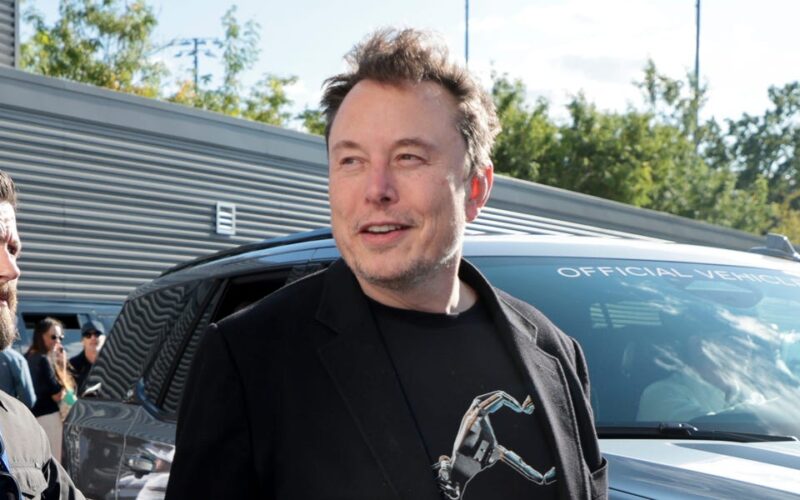- Elon Musk set out SpaceX’s timeline for getting humanity to Mars this week.
- He said SpaceX plans to send five Starship rockets to Mars in 2026, with crewed missions following two to four years later.
- Experts say SpaceX will face major engineering and regulatory challenges.
Elon Musk has set out his latest timeline for getting humans to Mars, and experts say it’s a classic SpaceX move.
The SpaceX founder said in a recent post on X that the company plans to launch around five uncrewed Starship rockets to Mars in 2026. Depending on the success of the unmanned missions, the first manned missions will be launched two or four years later.
Musk has previously set ambitious timelines for getting humanity to Mars. In 2016, he told an audience at a keynote speech in Mexico that manned missions to the Red Planet could begin as soon as 2022.
Unlike then, SpaceX now regularly delivers astronauts and cargo to orbit and has successfully tested Starship, the massive rocket that Musk has said it will use to travel to Mars.
Experts told Business Insider that SpaceX’s timeline is still ambitious and maybe a little optimistic — but said it was in line with the company’s method of setting ambitious goals that drive the industry forward, even if they don’t quite meet them.
“We have never been so close to sending humans to Mars,” said Philip Metzger, a former NASA scientist and professor of Planetary Science at the University of Central Florida.
“I think Musk’s timeline will prove a bit optimistic, but even accounting for that, we are on the threshold of a new era,” he added.
Engineering challenges
The primary challenge with any mission to Mars is timing. Space agencies time their missions in windows when Mars and Earth are closest — roughly every 26 months — to save fuel and money.
SpaceX is planning to launch five uncrewed Starship rockets to Mars in the first window in 2026, according to Musk.
Because Starship uses most of its fuel to get into orbit, the giant spacecraft must be refueled in space to reach Mars.
Metzger estimated that each Starship would require at least four refueling flights. This means that SpaceX will need to launch a lot of rockets in a very short period of time and perfect technologies such as Starship-to-Starship docking and fuel transfer between two spacecraft.
“The Mars departure window is limited to roughly a month by the alignment of the planets,” said Metzger. “Musk plans to send five Starships to Mars in the first cycle, so that will require about 25 launches in a short period.”
Analysing Musk’s plans in a post on X, astrophysicist and scientific software engineer Peter Hague said that SpaceX wants to “take a Saturn V-class rocket they fly quarterly and make it fly weekly in two years.”
“I have little doubt they can fly something towards Mars in that timeframe, but they will almost certainly fall short of the target,” said Hague, who concluded that crewed flights to Mars in 2031 or 2033 were a more realistic aim for SpaceX.
Red tape is the biggest hurdle of all
Metzger said the biggest barrier Musk will face in achieving his timeline may be dealing with regulators rather than technical hurdles.
“The biggest challenge will probably be getting mission launch approval from the Federal Aviation Administration (FAA),” he said.
“The FAA is not used to working at such a fast pace, and it will be painful convincing them to adapt. They have already been fighting over environmental impacts on Earth even with a very slow launch rate, and Mars missions will introduce a new dimension because they could impact the environment of Mars,” Metzger added.
Musk and SpaceX have already been sparring with regulators in recent weeks.
Musk has criticized the FAA over a proposed $633,000 fine and regulatory delays that have seen Starship’s next launch pushed back by two months.
Musk slammed the delay in a post on X, warning that “we will never get humanity to Mars” if these delays continue.
“I would argue that it’s less important whether SpaceX gets to Mars with crew in four to six years than that SpaceX is authentically trying to do so,” Matthew Weinzierl, professor of business administration at Harvard Business School and expert in the economics of space, said.
He added that much of SpaceX’s success has come from setting such ambitious targets in short timeframes.
“That kind of vision will continue to draw talent and capital to space that will fuel countless innovations on the way to Mars settlement, most of which will benefit primarily those of us on Earth,” he added.
SpaceX did not respond to a request for comment, sent outside normal working hours.
Source link
lol

